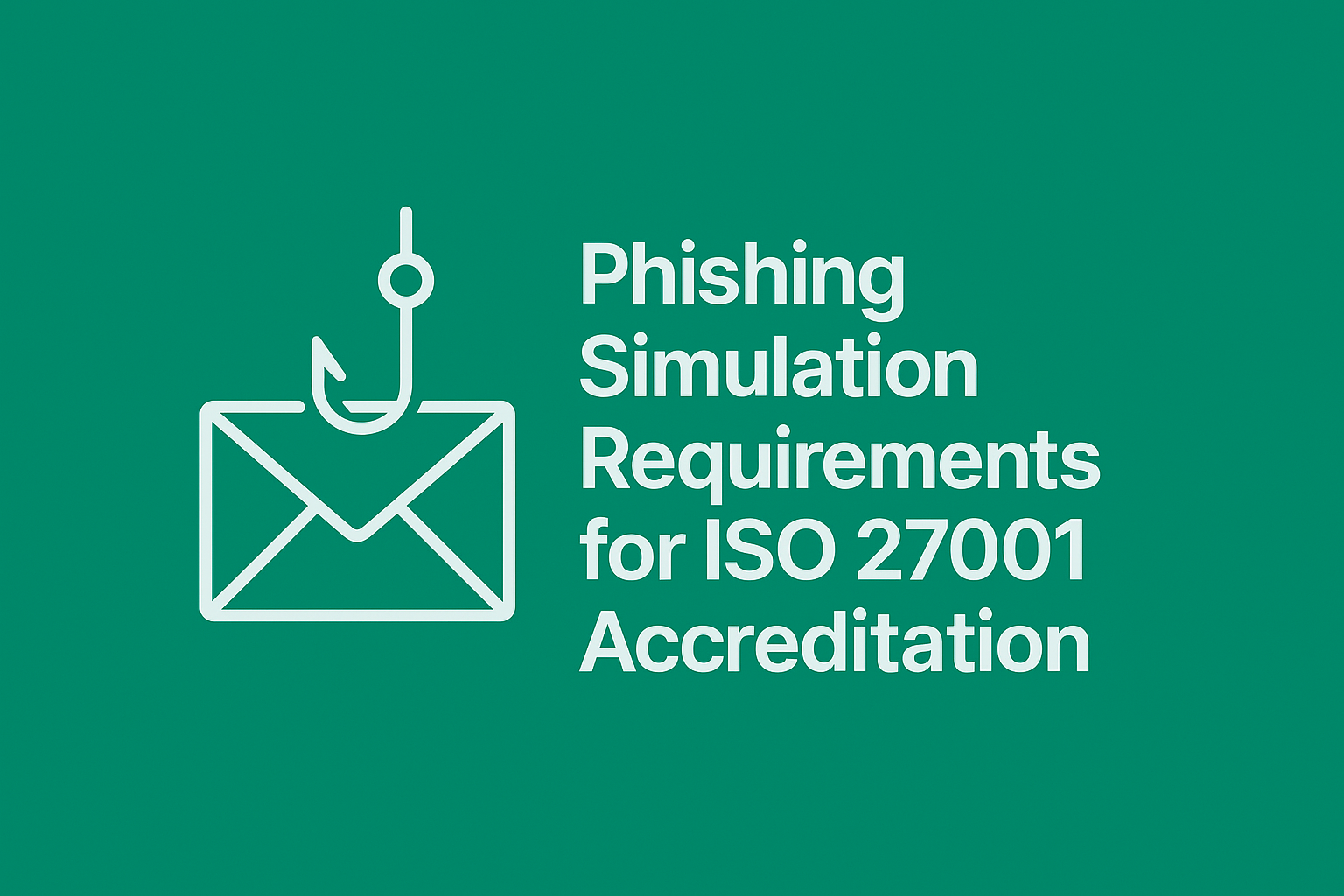In today’s cyber threat landscape, phishing remains one of the most common and effective attack vectors. As organizations strive to enhance their information security posture, many pursue ISO/IEC 27001 accreditation—a globally recognized standard for information security management systems (ISMS). One often overlooked but critical part of maintaining compliance with ISO 27001 is simulated phishing testing.
In this article, we’ll break down the phishing simulation requirements for ISO 27001, explain best practices for implementation, and highlight how RapidPhish can streamline the process with a flexible, cloud-based solution.
Why Phishing Simulations Matter for ISO 27001
ISO 27001 doesn’t mandate phishing simulations explicitly, but it requires a comprehensive approach to employee awareness and training, especially concerning social engineering threats. Control A.7.2.2 (Information Security Awareness, Education, and Training) and A.6.1.2 (Segregation of Duties) both emphasize the importance of ongoing training and testing.
Simulated phishing campaigns help organizations:
-
Evaluate staff susceptibility to phishing attacks.
-
Identify high-risk user groups.
-
Reinforce a security-first culture.
-
Demonstrate due diligence during audits.
ISO auditors often look for evidence that awareness programs are tested and effective—and phishing simulations are a direct, measurable way to show this.
What Types of Phishing Simulations Should You Send?
To ensure coverage and improve employee resilience, simulations should include a mix of scenarios:
1. Credential Harvesting
Fake login pages to mimic attackers stealing usernames and passwords.
2. Malware Delivery
Attachments or links that simulate malicious file downloads or drive-by infections.
3. Business Email Compromise (BEC)
Impersonation of executives or vendors requesting urgent actions, like invoice payments or data transfers.
4. Link-Based Click Tests
Harmless links used to gauge curiosity or attentiveness without triggering further steps.
How Often Should Phishing Simulations Be Sent?
ISO 27001 promotes continuous improvement. To meet this standard effectively:
-
Quarterly phishing campaigns are considered a best practice.
-
Monthly testing may be more appropriate for high-risk industries (e.g., finance, healthcare).
-
Use adaptive testing to retarget users who fail simulations more frequently.
-
Conduct baseline testing to establish a starting point, then track improvement over time.
The key is consistency and iteration. One-off tests do not satisfy ISO’s requirements for ongoing monitoring and training.
Measuring the Effectiveness of Phishing Simulations
To comply with ISO 27001, your phishing simulation program must be measurable and actionable. Track metrics such as:
-
Open rates (who opened the email)
-
Click rates (who clicked the link)
-
Submission rates (who entered credentials or downloaded attachments)
These insights should feed into your ISMS risk assessments and inform your awareness training strategy.
Simplify Your Phishing Simulations with RapidPhish
Managing an effective phishing simulation program can be time-consuming—especially for smaller teams or organizations new to ISO 27001 compliance. That’s where RapidPhish comes in.
Why Choose RapidPhish?
-
Cloud-Based Portal: Launch simulations in minutes via an intuitive web interface—no installation required.
-
Pay-As-You-Go Model: Only pay for what you use, making it ideal for growing organizations and budget-conscious teams.
-
Flexible Templates: Choose from a library of realistic phishing scenarios, or create your own.
-
Real-Time Analytics: Get instant feedback on user behavior and performance to improve your security posture.
-
ISO-Aligned Reporting: Export reports that map directly to ISO 27001 audit expectations.
With RapidPhish, organizations can build a scalable, repeatable phishing simulation program that satisfies ISO 27001 requirements while minimizing operational burden.
Conclusion
Phishing simulations are a key component of an ISO 27001-compliant security awareness program. By deploying realistic, recurring, and measurable simulations, organizations can not only strengthen their defense against social engineering attacks but also provide clear evidence of compliance.
Using RapidPhish, managing this critical task becomes simpler, more efficient, and more cost-effective. Whether you’re preparing for your first ISO 27001 audit or looking to enhance an existing ISMS, phishing simulations should be part of your strategy—and RapidPhish makes them easy to deploy.

